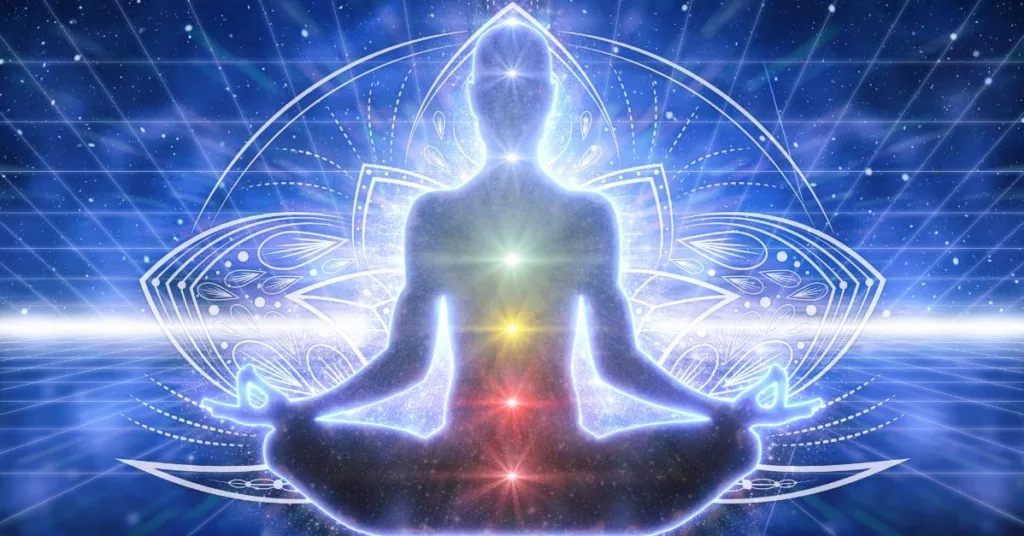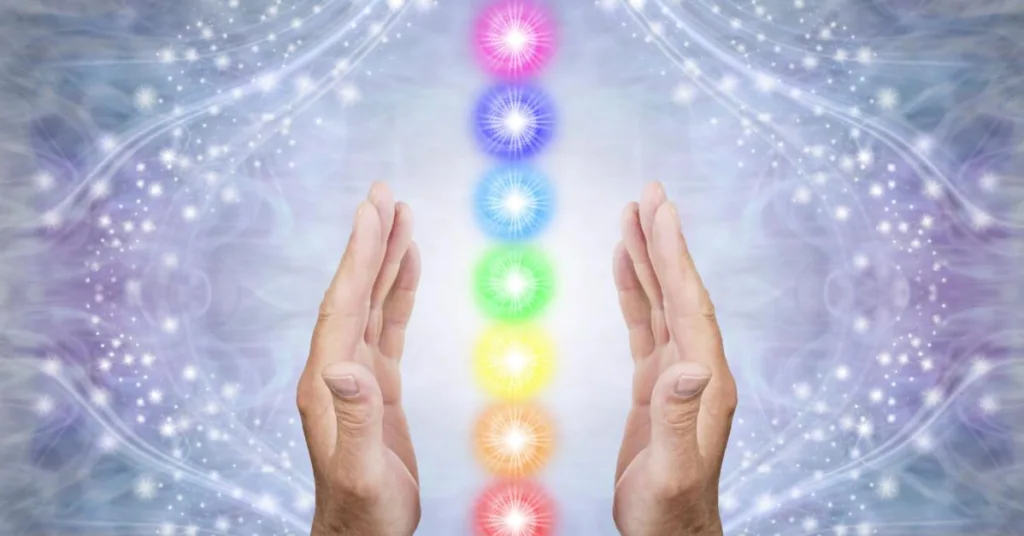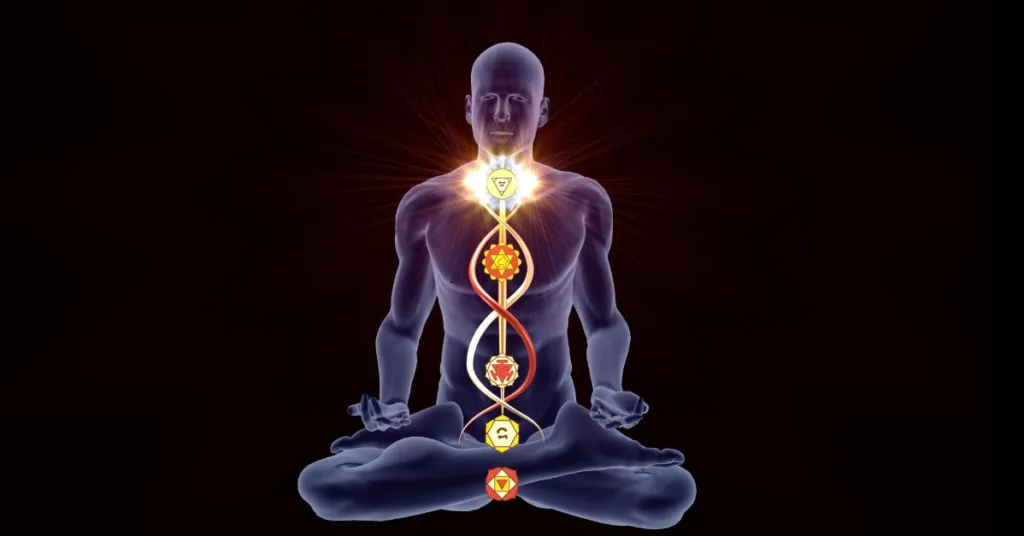Ki energy meditation encompasses a series of practices designed to control and enhance Ki, also known as Qi or Chi, the vital life force recognized in various Eastern traditions. This energy circulates through meridians within the body, playing a crucial role in maintaining health and vitality, akin to the principles of acupuncture and the holistic view of Qi Gong. Practitioners engage in specific techniques such as aura and chakra meditation, which aim to harmonize the body’s energy centers, and methods like Reiki and Qi Gong, which focus on channeling energy to foster healing and wellbeing.
The article discusses key practices within Ki energy meditation, including aura and chakra meditation, Reiki, and Qi Gong. Aura and chakra meditation involve the balancing of energy centers, essential for emotional and physical equilibrium. Reiki and Qi Gong, both energy channeling techniques, are utilized for their therapeutic benefits, enhancing physical strength, mental focus, and spiritual growth. Collectively, these practices contribute to effective energy management and holistic health improvement, illustrating the interconnected nature of these meditative techniques and their impact on overall wellbeing.
Table of Contents
What Is Ki Energy?
Ki energy, also referred to as Qi or Chi in Chinese and Prana in Hindu traditions, represents a fundamental concept across various Eastern philosophies.
It is often described as an essential life force that circulates through the body, integral to maintaining health and vitality.
Understanding the different cultural interpretations and terminologies associated with Ki can enhance our appreciation and application of Ki energy meditation practices.
Ki, Qi, Chi, and Prana
Qi, also known as ‘Ki’ in Japanese and ‘Chi’ in Chinese culture, is synonymous with ‘Prana‘ in Hindu philosophy. It signifies a vital life force integral to Asian traditions and medicinal practices.
In Traditional Chinese Medicine, Qi flows through meridians, pathways essential for health equilibrium. Practices like yoga and Ayurveda identify Prana as a crucial life energy, vital for well-being.
Techniques such as meditation and tai chi are employed to regulate and enhance this energy, promoting vitality and health. These concepts and practices emphasize the interconnectedness of physical and spiritual health, underscoring the importance of energy balance through the harmonious interaction of universal energy and personal Ki in holistic well-being.
What Is Ki Energy Meditation?

Ki energy meditation encompasses various practices aimed at harnessing and balancing the essential energy known as ‘Ki’.
Practices such as Ki energy manipulation, aura meditation, and chakra meditation focus on enhancing personal well-being by influencing energy fields and pathways.
Additionally, disciplines like Reiki and the application of Ki in martial arts illustrate the broader cultural and therapeutic relevance of Ki energy meditation.
Related Topic: What is Energy Magick?
Ki Energy Manipulation
Ki energy meditation employs techniques to control and enhance Qi, the vital life force, believed to improve health and well-being by aligning bodily energies with cosmic forces. This practice increases vitality, mental clarity, physical alignment, and reduces stress and fatigue.
| Technique | Purpose | Benefit |
|---|---|---|
| Focusing Breath | Concentrate Ki | Boosts energy levels and promotes the circulation of subtle energy throughout the body. |
| Visualization | Channel Ki | Sharpens cognitive functions. |
| Posture Alignment | Optimize Ki flow | Augments physical posture. |
| Palming | Stabilize Ki | Alleviates tension and exhaustion. |
Ki energy manipulation, through methods like focusing breath, visualization, posture alignment, and palming, directly impacts personal health by facilitating the management of internal energy flows. Each technique serves a specific function, contributing to overall vitality and balance.
Aura Meditation
Aura Meditation, a key practice within Ki energy meditation, aims to enhance well-being through the management of one’s energy field. This meditation form employs deep concentration and visualization to sense and modify the aura, a bio-electromagnetic field enveloping individuals.
Practitioners assert that a robust, unblemished aura fosters physical, emotional, and spiritual health. The technique starts with grounding exercises that connect participants with terrestrial energy, progressing to methods that purify and fortify the aura.
Consistent practice of aura meditation is believed to boost vitality, elevate mood, and cultivate balance with oneself and nature, thus supporting comprehensive health and personal development.
Chakra Meditation
Chakra Meditation aligns and balances the body’s key energy centers, enhancing holistic well-being. This technique focuses on the seven primary chakras positioned along the spine from base to crown, each associated with distinct physical, emotional, and spiritual aspects.
Proper alignment of these chakras improves energy flow across the body. Practitioners utilize visualization, mantras, and breath control to activate these energy centers. Engaging in this meditation aids in healing, fosters emotional clarity, and deepens spiritual connections, promoting internal balance and peace.
Reiki and Bioenergy Healing
Ki energy meditation, associated with disciplines like Reiki and bioenergy healing, aims to harness the body’s intrinsic life force to foster healing and equilibrium, tapping into the vast reservoir of universal energy. This practice originates from the belief that a vital energy flow is foundational to all bodily and mental operations. Proponents of Reiki and similar bioenergy techniques assert that manipulating this energy can improve health and relieve various conditions.
- Reiki: This Japanese method involves practitioners channeling energy through touch to stimulate the patient’s natural healing capabilities.
- Therapeutic Touch: This technique focuses on the purification and equilibrium of the body’s energy fields.
- Quantum Healing: This approach harnesses the power of focused intention to influence the body’s energy field, encouraging healing at a quantum level.
- Biofield Therapy: This therapy engages with the energy fields surrounding the human body, aiming to manipulate them for improved health outcomes.
Each of these modalities shares a common goal: the optimization of the body’s energy system to enhance overall well-being. They vary primarily in techniques and specific applications but converge in their core focus on energy as a crucial element in health and healing.
The Concept of Ki in Martial Arts
In martial arts, particularly in Japanese disciplines like Aikido and Karate, the concept of Ki pertains to the manipulation of life force. This manipulation aims to enhance physical strength, agility, and mental intuition. Practitioners cultivate Ki through techniques such as deep breathing, meditation, and controlled physical movements.
Effective management of Ki not only boosts martial capabilities but also promotes overall well-being and sharpens mental focus. This process embodies the integration of physical prowess and metaphysical awareness, essential for martial artists.
Ki Energy Exercises

Ki Energy Exercises focus on enhancing one’s sensitivity and control over the flow of Ki within the body. Techniques such as sensing the Ki flow with your hands and manipulating the Ki flow within Your Body are foundational practices that train individuals to perceive and direct their internal energy as well as align with the universal life energy.
Related Topic: Chaos Magick Energy Work
Kundalini meditation, meanwhile, aims to awaken deeper spiritual potentials by guiding this essential energy through the body’s chakras.
Sensing the Ki Flow with Your Hands
To perceive qi, a subtle biofield circulating through the body, practitioners utilize specific hand exercises that enhance sensitivity to this energy. These exercises, simple and adaptable, require concentration and manual action.
- Energy Activation: Practitioners initiate by vigorously rubbing their palms together, generating warmth and stimulating the energy centers located within the palms.
- Energy Sensation: Subsequently, practitioners gently cup their hands and gradually separate them, detecting any sensations of resistance or magnetic-like pull, indicative of energy presence between the hands.
- Energy Transfer: Practitioners then conduct an exercise where one hand passes over the other, from the wrist to the fingertips, focusing on the sensation of energy moving or transferring between the hands.
- Energy Focus: Lastly, practitioners close their eyes and concentrate exclusively on the sensations within their hands, thereby sharpening their perception and awareness of the Ki flow.
These practices serve not only to detect but also to manipulate qi, facilitating a deeper understanding and control over this vital energy.
Manipulating the Ki Flow within Your Body
Familiarity with sensing Qi facilitates the next stage: mastery of Qi manipulation techniques for enhanced well-being. Qi Gong, a form of Ki energy exercise, encompasses slow, coordinated movements, deep rhythmic breathing, and a meditative state, all aimed at directing Qi flow to boost health and fortify the body.
Central practices include standing meditation which anchors energy, and dynamic exercises tracing meridian pathways, essential for energy circulation. Regular participation in these exercises elevates energy levels, diminishes stress, and fosters internal healing, leveraging Qi for personal growth and comprehensive health.
Kundalini Meditation
Kundalini meditation, rooted in traditions similar to Qi Gong, enhances practitioners’ spiritual, mental, and physical states by awakening latent spinal base energies, termed ki or chi. This technique integrates several core methods:
- Chakra Activation: Engages specific spinal energy centers, known as chakras, to achieve equilibrium and promote wellness.
- Breathing Techniques: Employs deliberate breath control to improve vital energy circulation and mental focus.
- Mantras and Sounds: Uses designated vocalizations to facilitate the movement of energy and heighten spiritual consciousness.
- Mudras and Postures: Involves strategic hand gestures and physical positions to effectively manipulate and guide internal energies.
Each element of Kundalini meditation contributes to the holistic unification and transformation of the adherent, aligning body, mind, and spirit through disciplined practice.
Learning Ki Energy Meditation from a Teacher

A teacher knowledgeable in Ki energy meditation enhances the process of learning, customizes techniques, and deepens understanding. Experienced instructors assist in navigating energy manipulation complexities and offer unique insights beyond textual or online resources. Mentorship in this field ensures discipline, essential for cultivating consistent Ki flow. Teachers correct crucial elements like posture, breathing, and focus, pivotal for maximizing meditation benefits. Moreover, they guide through various meditation stages, from introductory to advanced, enriching the Ki practice.
Group learning under a teacher’s guidance fosters community, motivation, and emotional support, benefiting the learning process. Engaging with a knowledgeable instructor is critical for those committed to mastering Ki energy meditation.
Want to learn Ki energy meditation from an experienced master? Click the button below to apply to my 1-on-1 coaching program!
Summary: Well-being and Ki Energy Meditation

Ki energy meditation, rooted in ancient Eastern traditions, focuses on the cultivation and balance of qi, or life force energy, integral to holistic health practices.
This form of meditation incorporates breath control, specific movements, and mental focus to achieve various health benefits, including stress reduction and immune system enhancement.
By harmonizing physical, mental, and spiritual aspects, Ki energy meditation enhances overall quality of life, aligning with contemporary wellness strategies.
Can Ki energy meditation help with chronic pain management?
Ki energy meditation has been researched as a potential therapy for chronic pain management. While some studies indicate benefits, the level of scientific support varies, and personal experiences alongside clinical trials provide additional insights.
Are there age restrictions for practicing Ki energy meditation?
Ki energy meditation has no age restrictions, being suitable for all age groups. It enhances health and wellness by integrating mental focus, physical discipline, and energy management.
How does Ki energy meditation differ from yoga?
Ki energy meditation primarily cultivates and balances life force; in contrast, yoga integrates physical postures, breath control, and meditation to promote bodily and mental wellness. Both practices aim to enhance spiritual connectivity and overall health.
What are the potential risks of practicing Ki energy meditation incorrectly?
Practicing Ki energy meditation may lead to physical strain, psychological distress, or worsen existing health conditions if done incorrectly or without expert guidance.
Can Ki energy meditation enhance athletic performance?
Ki energy meditation, originating from Eastern traditions, may improve athletic performance by enhancing focus, reducing stress, and promoting mental and physical balance. However, the scientific validation of these effects remains inconclusive.




